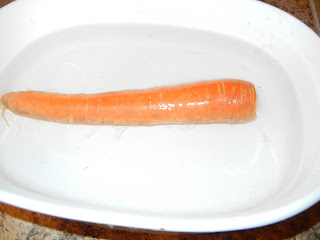I've been a registered nurse for 12 1/2 years now and have spent most of my experience between the emergency department and the cardiothoracic intensive care unit. I'm telling you this, because even in the medical profession, we care about temperature. Obviously, a fever or high temperature is the body's way of fighting a virus or bacteria that has invaded it, but if it gets too high, we start to worry. I can remember caring for septic patients in the ICU that required cooling blankets to keep their temps down. Somewhere around 107 degrees, depending on who you ask or where you read, brain cells begin to die, so we do not want to see this high of a temp in a person.
Just as in brain cell damage/death with high temperatures, food is also destroyed if subjected to high heat. Consider these temps:
Raw fruits, vegetables, seeds, and nuts begin to have breakdown of living enzymes at 107 degrees! Same as brain cells!! Wow! That is not that hot when you think about most cooking methods. By 122 degrees, the food will be completely dead. Most raw food resources will tell you to keep heat under 118 degrees, but to be perfectly safe and undestroyed, temps should remain under the 107 degree mark. Keep in mind that the temperature of boiling water is 212 degrees. And if you think steaming is a better choice, think again! The temperature of steam is around 212 degrees as well. You could use your oven, but depending on what type of oven you have, heat settings only go as low at 225 degrees. All canned and frozen vegetables are also heated/blanched prior to packaging. If you are a milk drinker, you should know that during pasteurization, milk is heated to 160, far beyond the cutoff of living foods! So, it's easy to see how most Americans are eating completely dead food.
The best way to heat foods, if necessary, is to use a dehydrator set on a low heat setting.
Here's a little science experiment I read about on the Hallelujah Acres website. The directions said to buy 5 raw carrots. Cut about 1/2 inch below the stem on carrot #1, and place it in a shallow bowl of water without cooking it. The other carrots are to be cooked using 4 different methods (steam, boil, oven, fry etc.), then also cut 1/2 inch from stem and also placed into a shallow bowl of water. The uncooked carrot is supposed to actually grow, while the cooked carrots will not. Here is the results of my experiment.
I chose to steam one carrot, because it's generally thought to be the best cooking method. I steamed the whole carrot for 15 minutes.
I cut the top off of my raw carrot.
I placed the raw carrot in water.
 |
| Steamed carrot in front and raw carrot in back. I took pictures of them side by side, then placed them each in their own pan. |
 |
| Raw carrot green. |
 |
| Cooked carrot green. |
This is a great experiment to show just how "dead" cooked food is! It starts to rot very quickly, unlike the raw carrot, which still contains it's living enzymes.
 |
| I'm glad you can't smell this guy! |






No comments:
Post a Comment